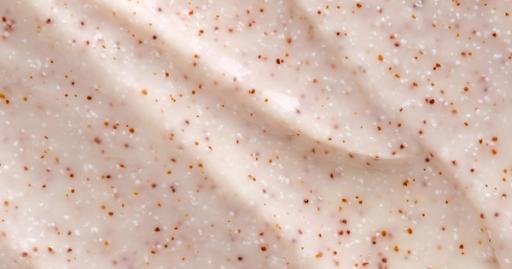ESSENTIAL SCRUB
Illuminating refining scrub
skin care
Eve Mérinville | Corporate RD Excellence & SC RD and Innovation Director
10 min de lecture

Many of us desire to improve our skin’s appearance by evening out its tone. Dark spots, under-eye circles, or areas of redness are all indicators of an uneven complexion.
Luckily, with the right approach, it is entirely possible to have radiant and healthy skin. In this article, we'll explore the causes of uneven skin tone and targeted skincare strategies to help you correct it.
"It can be tempting to look for a quick-fix, with potentially aggressive products. Treat skin with uneven tone carefully, choosing enzymatic or gentle acids for renewal, and brightening serums and creams that protect moisture levels."
Elisabeth Nehme - Global Brand Ambassador Comfort Zone
Uneven skin tone refers to patches or areas of the skin that appear lighter (hypopigmentation) or darker (hyperpigmentation) than the surrounding skin. It is a common concern for many and encompasses various types of skin discoloration. This includes dark spots, melasma, sun spots and uneven skin texture characterized by dry patches, accumulated dead skin cells, fine lines, or blotchiness.
Understanding your skin type is crucial for managing uneven skin tone. Different skin types react differently to skincare products and treatments which impacts the effectiveness of your routine. Here's a simple guide to identifying your skin type:
There are many possible causes for uneven skin tone, but the most common is sun exposure. When the skin is repeatedly exposed to UV rays, brown or dark spots (sun spots) develop as a result to help protect the skin from further damage. Other contributors to uneven skin tone include:
To create a skincare routine that will be effective for your skin, you need to identify your skin type. From there, follow these practical steps for achieving clear, even toned skin:
Always begin your routine by using a gentle cleanser to remove dirt, oil, and makeup from the face. By removing these impurities, you help prevent buildup, which can result in a dull and uneven complexion.
Regular exfoliation helps to remove dead skin cells, resulting in a smoother and more even skin tone. Exfoliation also promotes cell renewal, which improves the look of dark spots and other discolorations. It's important that you choose gentle exfoliants suitable for your skin type.
Keep in mind that over-exfoliating can have adverse effects on your skin. You should only use them in moderation. The Comfort Zone Essential Scrub, is a great choice for all skin types to achieve these benefits safely and effectively.
Adding a non-comedogenic moisturizer to your skincare routine hydrates your skin without clogging pores or causing irritation. These moisturizers are formulated to be lightweight and non-greasy, ensuring they nourish the skin without triggering breakouts. This helps in maintaining an even skin tone.
Dark spots and dull skin represent forms of discoloration and uneven skin tone. Addressing these concerns effectively requires a targeted approach using face serums with ingredients that address specific skin concerns.
Stubborn spots from aging, inflammation, or sun exposure may need extra help. For such concerns, consider using a brightening dark spot corrector like the Luminant Serum. Here are some key ingredients found in treatment serums:

Since the skin under your eyes is thinner and more delicate compared to the rest of your face, it is more prone to dark circles and signs of aging. When choosing products, opt for ones specifically formulated for the eye area. Apply them gently without pulling or tugging to keep the skin hydrated and smooth.
Maintaining skin hydration is vital for its health and appearance, as it helps preserve elasticity and brightness. Using a brightening cream can add moisture, improve texture, and give your skin a radiant glow. Don't forget to drink water in addition to your skincare routine to support skin health internally.
In some cases, intensive treatments may be required for stubborn discoloration that does not improve with regular skincare routines alone. Chemical peels, laser therapy, or microneedling are all treatments that target deeper layers of the skin to promote a more even complexion.
Makeup can provide a temporary remedy for uneven skin tone. Color correctors are used to neutralize redness or dark spots, whilst foundations offer customisable coverage. Makeup isn't a permanent solution—addressing skin concerns using skincare products will result in the best long-term results.
Do you know the ways you can prevent an uneven skin tone? Here are four tips! They’ll also keep your skin clear and glowing:

Comfort Zone designed the Luminant Collection to address uneven skin tone effectively. Start your routine with the Luminant Serum, targeting dark spots directly. Follow up immediately with the Luminant Cream to restore radiance and luminosity to your skin. By integrating the Luminant Collection into your skincare regimen, you’ll experience the benefits of brightening, hydration, and improved skin tone, resulting in healthy, glowing skin.
Illuminating refining scrub
Brightening serum
Illuminating correcting cream
Dark spot correcting serum
Anti-spot protection